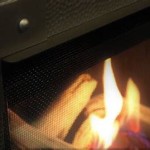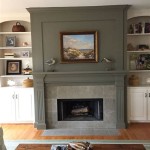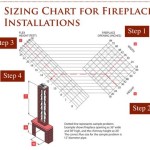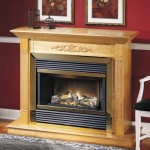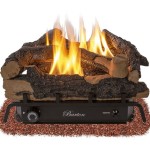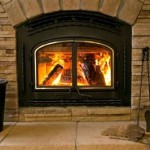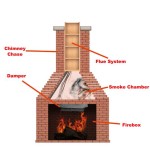Understanding Gas Fireplace Burner Parts
Gas fireplaces offer a convenient and efficient way to enjoy the ambiance and warmth of a traditional fireplace without the hassle of wood. The heart of any gas fireplace lies within its burner system. Understanding the various gas fireplace burner parts is crucial for proper maintenance, troubleshooting, and ensuring safe and efficient operation. This article provides a detailed overview of these components, their functions, and their importance within the overall system.
A gas fireplace burner assembly is a carefully engineered system designed to safely and reliably deliver and burn fuel. Mishaps can occur when any of the parts malfunction. Gas leaks, improper ignition, and inefficient heating are common indicators of potential problems within the burner system. Regular inspection and maintenance can prolong the lifespan of the components and prevent hazardous situations.
The system begins with the gas supply and proceeds through a series of components to deliver a controlled flow of gas to the burner, where it mixes with air and is ignited. Each part performs a specific function, and the integrity of each component is essential for the overall performance and safety of the fireplace. The following sections outline the key components of a typical gas fireplace burner system.
Gas Valve: The Control Center
The gas valve is arguably the most critical component of the entire system. It acts as the central control point for regulating the flow of gas to the burner. The valve is responsible for turning the gas supply on and off, and it can also control the gas flow rate, thereby controlling the flame height and heat output. Modern gas valves are often equipped with safety features such as a thermocouple or thermopile sensor, which automatically shuts off the gas supply if the pilot light or main flame is extinguished. This prevents the dangerous accumulation of unburned gas.
Gas valves vary in complexity. Simple on/off valves are used in basic models, while more sophisticated models include features such as remote control operation, thermostatic control, and variable flame height settings. Regardless of the type, all gas valves must adhere to strict safety standards and undergo rigorous testing to ensure reliable and safe operation. The valve is typically connected to the main gas supply line on one side and to the burner assembly on the other. The connection points must be properly sealed to prevent gas leaks.
When troubleshooting a gas fireplace, the gas valve is often one of the first components to be investigated. Common problems include a malfunctioning solenoid, a blocked gas passage, or a faulty thermocouple or thermopile. Testing the gas valve typically requires specialized tools and knowledge, and it is advisable to consult a qualified technician for any repairs or replacements.
Pilot Assembly: The Ignition Spark
The pilot assembly is responsible for providing the initial flame that ignites the main burner. It consists of a small burner, a gas supply line, an electrode (igniter), and a thermocouple or thermopile. The pilot light is a small, continuous flame that burns constantly, providing a readily available ignition source for the main burner. The electrode generates a spark to ignite the pilot light, and the thermocouple or thermopile senses the presence of the pilot flame. If the pilot light goes out, the thermocouple or thermopile signals the gas valve to shut off the gas supply, preventing a gas leak.
The thermocouple and thermopile are both heat-sensitive devices, but they operate on slightly different principles. A thermocouple generates a small electrical current when heated, while a thermopile generates a larger current by combining multiple thermocouples. The current generated by the thermocouple or thermopile is used to hold the gas valve open, allowing gas to flow to the pilot light and the main burner. If the current drops below a certain threshold, the gas valve closes automatically.
Common problems with the pilot assembly include a clogged pilot orifice, a faulty electrode, or a malfunctioning thermocouple or thermopile. A clogged pilot orifice can restrict the gas flow to the pilot light, causing it to be weak or unstable. A faulty electrode may fail to generate a spark, preventing the pilot light from igniting. A malfunctioning thermocouple or thermopile may fail to sense the pilot flame, causing the gas valve to shut off prematurely. Cleaning the pilot orifice and replacing the electrode or thermocouple/thermopile are common troubleshooting steps.
Burner: The Flame Generator
The burner is the heart of the gas fireplace, where the gas and air mixture is ignited to produce the flame and heat that warms the room. Burners come in a variety of shapes and sizes, depending on the design of the fireplace. Common types include ribbon burners, log burners, and pan burners. A ribbon burner consists of a long, narrow strip of metal with small holes or slots through which the gas flows. A log burner is designed to resemble a stack of logs, with gas flowing through the logs and burning on the surface. A pan burner is a shallow pan with holes or slots through which the gas flows, creating a bed of flames.
The burner is typically made of stainless steel or cast iron, materials that can withstand the high temperatures generated by the burning gas. The burner design is crucial for ensuring even flame distribution and efficient combustion. The burner also incorporates air inlets that allow air to mix with the gas before it is ignited. The ratio of gas to air is critical for achieving complete combustion and minimizing the production of harmful byproducts such as carbon monoxide.
Over time, the burner can become clogged with dust, debris, or soot, which can affect its performance. A clogged burner may produce uneven flames, reduced heat output, or carbon monoxide. Regular cleaning of the burner is essential for maintaining its efficiency and safety. This typically involves removing the burner from the fireplace and cleaning it with a brush and compressed air. In some cases, it may be necessary to disassemble the burner to thoroughly clean all of the gas passages and air inlets.
The burner might crack or corrode due to the extreme heat and constant exposure to combustion byproducts. A damaged burner can leak gas, leading to a potentially dangerous situation. If the burner is cracked or corroded, it should be replaced immediately by a qualified technician.
Air Shutter: Fine-Tuning the Mixture
The air shutter is a small, adjustable plate or collar located near the burner. Its purpose is to control the amount of air that mixes with the gas before it is ignited. The air-to-gas ratio is crucial for achieving efficient combustion and producing a clean, blue flame. If there is too little air, the flame will be yellow and sooty, and the fireplace will produce carbon monoxide. If there is too much air, the flame will be blue and weak, and the fireplace will not produce enough heat.
The air shutter is typically adjusted by loosening a screw or clamp and rotating the plate or collar to increase or decrease the size of the air opening. The optimal setting for the air shutter will depend on the type of gas, the burner design, and the altitude. A qualified technician can use a combustion analyzer to measure the levels of carbon monoxide and oxygen in the flue gas and adjust the air shutter accordingly.
Adjusting the air shutter is a delicate process that requires careful attention to detail. It is important to make small adjustments and observe the flame characteristics after each adjustment. If the flame is yellow and sooty, increase the air opening. If the flame is blue and weak, decrease the air opening. The goal is to achieve a clean, blue flame with good heat output and minimal carbon monoxide production.
Thermocouple/Thermopile: The Safety Sensor
As previously mentioned, the thermocouple or thermopile is a crucial safety component that ensures the gas supply is shut off if the pilot light is extinguished. These devices rely on heat to generate a small electrical current. The thermocouple, with its single junction, produces a smaller current compared to the thermopile, which uses multiple junctions to generate a larger current. This current is used to keep the gas valve open, allowing gas to flow to the pilot and main burner.
If the pilot light goes out, the thermocouple or thermopile cools down and the electrical current drops below a certain threshold. This drop in current signals the gas valve to close, shutting off the gas supply and preventing a gas leak. This safety mechanism is essential for preventing the accumulation of unburned gas, which could lead to an explosion or carbon monoxide poisoning.
A faulty thermocouple or thermopile can cause the gas fireplace to shut off prematurely, even when the pilot light is lit. This is a common problem that can be easily diagnosed and corrected. The thermocouple or thermopile can be tested with a multimeter to measure its output voltage. If the voltage is below the specified value, the thermocouple or thermopile should be replaced. Regular inspection and replacement of thermocouples or thermopiles according to the manufacturer's recommendations are crucial for ensuring the safe and reliable operation of the gas fireplace.
In conclusion, understanding the function and importance of each gas fireplace burner part is essential for homeowners and technicians alike. Proper maintenance, troubleshooting, and repair of these components can ensure the safe and efficient operation of the gas fireplace, providing years of reliable warmth and ambiance.

Gas Fireplace Natural Bdm35 The Cozy Cabin Lennox Hearth Parts

G400 Series G450 G490 Natural Vent Gas Fireplace 114 117 The Cozy Cabin Stove Parts

Parts Of A Gas Fireplace Explained With Real Examples

Gas Fireplace Vermontcastings Parts For Vermont Castings Majestic

A Plus Inc Superior B800 Replacement Parts And Accessories

Napoleon Parts

G2000 The Cozy Cabin Stove Fireplace Parts

Napoleon Parts

Identifying Gas Fireplace Parts Www Mygasfireplacerepair Com

Napoleon Parts

